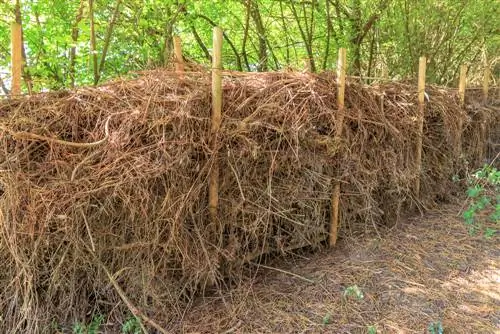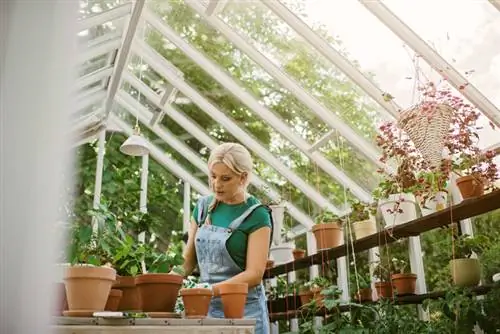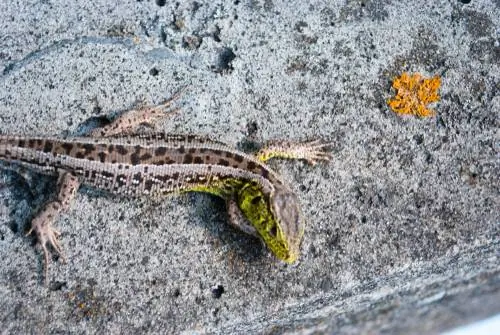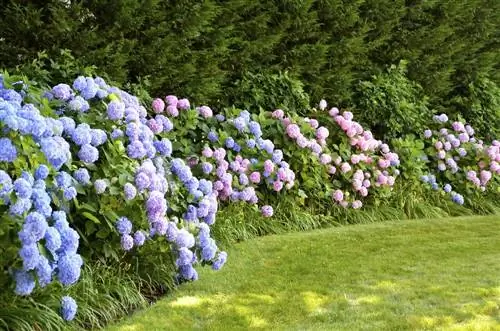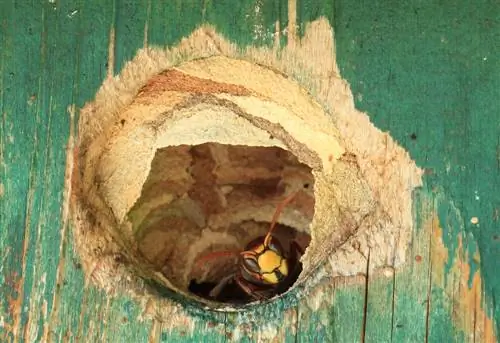- Author admin [email protected].
- Public 2023-12-16 16:46.
- Last modified 2025-01-23 11:22.
In the 80s, Hermann Benjes described a hedge shape that already looks back on a long history. Farmers placed the clippings on the edges of their property primarily to mark the boundaries. Such structures still shape the landscape today.
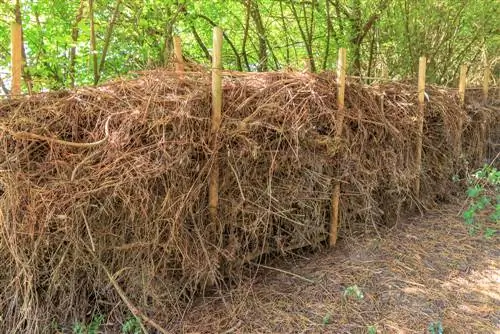
How can I create a Benje hedge?
To build a Benje hedge, choose a suitable location, pay attention to the soil conditions and drive stakes into the ground in two rows. Fill the gap with cuttings, leaves and soil and, if necessary, plant native hedges and shrubs to support it.
Important preliminary considerations
Choose the location for the hedge carefully. On the one hand, this should offer enough space and also be suitable for the surroundings. If your property is located near a nature reserve, the species composition of the Benje hedge can have negative consequences for this landscape. This danger exists especially with remnants of trees that sprout again. Therefore, avoid using dominant blackberries, which quickly take over the hedge and leave no room for further development.
Pay attention to soil conditions
If the subsoil is very nutrient-rich, predominantly competitive and nutrient-consuming plants will settle. They suppress the emergence of rarer species because their rapid growth robs other seeds of light. Last but not least, they limit faunal biodiversity.
How to create a hedge
To give the Benje hedge a stable shape, beginners can drive stakes into the ground in two rows at regular intervals of two meters from each other. The width depends on the individual space available and can vary between one and two meters. Cuttings from woody plants are piled up between this form. Leaves and soil are also suitable as filling material. The hedge changes over time and collapses, so you can regularly replenish new clippings.
How the habitat develops:
- Birds build nests
- Hedgehogs find places to retreat
- Seeds are deposited by wind and weather
Jumpstart
If you have certain plant species in mind that should settle in the hedge and do not grow in the surrounding area, you can help the greening a little. Plant some native hedges and shrubs directly into the wall. Within a short time, the deadwood hedge will be given new life by the flowers and you will see how the trees slowly grow into the overall picture. Another advantage of targeted planting is that the Benje hedge has a little more stability.

